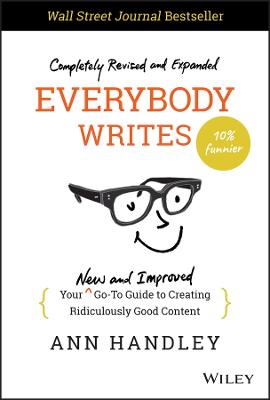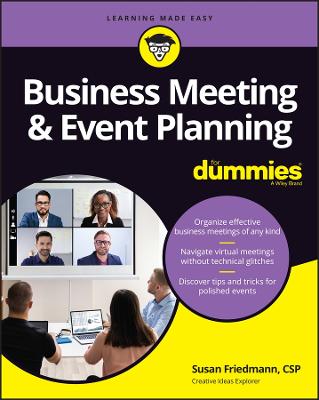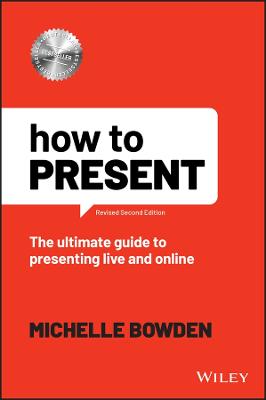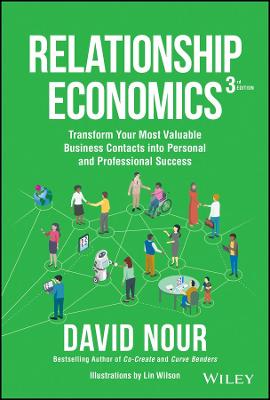Everybody Writes
 -15%
portes grátis
-15%
portes grátis
Everybody Writes
Your New and Improved Go-To Guide to Creating Ridiculously Good Content
Handley, Ann
John Wiley & Sons Inc
10/2022
432
Dura
Inglês
9781119854166
15 a 20 dias
635
Descrição não disponível.
Acknowledgments xvii
Start Here 1
Part I Writing Rules: How to Write Better (and How to Hate Writing Less) 15
1 Everybody Writes 19
2 Writing Is a Habit, Not an Art 21
3 How to Keep a Daily Writing Ritual When You Aren't Feeling It 25
4 Shake Off School Rules 28
5 Publishing Is a Privilege 31
6 Why We Need a Writing Process 33
7 Introducing the Writing GPS Framework 35
8 Embrace the Ugly First Draft 44
9 Draft 2: Cross Out the Wrong Words 48
10 Draft 3: Swap Places with Your Reader 52
11 Draft 4: Humor Comes on the Rewrite 55
12 Develop Pathological Empathy 56
13 Think Before Ink 61
14 Fifteen Ways to Organize 65
15 Start with Dear Mom 68
16 If You Take a Running Start, Cover Your Tracks 70
17 Place the Most Important Words at the Beginning of Each Sentence 74
18 Notice Where Words Appear in Relation to Others Around Them 77
19 Leads and Kickers 79
20 Show, Don't Tell 85
21 How to Write Funny 92
22 Use Surprising Analogies, Meaty Metaphors 97
23 Add Another Sense 103
24 Add Obvious Structure to a List 105
25 Approach Writing Like Teaching 108
26 Keep It Simple- But Not Simplistic 110
27 Find a Writing Partner 113
28 Avoid Hot Dog Writing 116
29 Hire a Human Editor 120
30 Set a Goal Based on Word Count (Not Time) 123
31 End on an I- Can't- Wait- to- Get- Back- to- It Note 125
32 Deadlines Are the WD- 40 of Writing 126
Part II Writing Rules: Grammar and Usage 129
33 Use Real Words 131
34 Avoid Frankenwords and Words Pretending to Be Something They're Not 133
35 Don't Use Weblish (Words You Wouldn't Whisper to Your Sweetheart in the Dark) 135
36 Default to the Present Tense 136
37 Choose Active Voice Over Passive Voice 139
38 Ditch Weakling Verbs 141
39 Adverbs Aren't Necessary (Usually) 143
40 Use Cliches Only Once in a Blue Moon 146
41 "Mistakes Were Made." Avoiding These Simple Mistakes Will Make You Look and Feel Smarter Instantly 149
42 Words We Always Get Wrong 154
43 Grammar Rules Made to Be Broken 164
44 Limit Moralizing 168
45 Eggcorns and Mondegreens 170
Part III Voice Rules 173
46 Sweat the Smallest Stuff 177
47 What's Brand Voice? 180
48 How to Develop Your Brand Voice 182
49 Four Powerful Places to Apply Brand Voice 190
50 Voice Doesn't Change, Tone Does 192
Part IV Story Rules 195
51 The Six Elements of a Marketing Story 197
52 Your Brand Story: Tell The Story Only You Can Tell 201
53 Product Story: Make Your Customer the Hero 206
54 The Rudolph Framework in Action 214
55 Hermit Crab Content 219
56 Innovation Is About Brains, Not Budget 221
Part V Publishing Rules 223
57 Share News That's Really News 227
58 Biased and Balanced 229
59 Brands as Media Companies 231
60 Should You Ungate Your Content? 235
61 Memes, Trends, Newsjacking 239
62 Better Interviews with These Nonobvious Tips 247
63 Check Your Facts 252
64 A Mind- Like- Water Mindset 254
65 Seek Out the Best Sources 256
66 Beware of Hidden Agendas 257
67 Credible Data 258
68 Cite as You Write 260
69 Curate Ethically 265
70 Seek Permission, Not Forgiveness 270
71 The Basics of Copyright, Fair Use, and For Attribution 273
Part VI 20 Things Marketers Write 277
72 The New Ideal Length for Every Piece of Content 279
73 Writing Direct Response Email 282
74 Why You Need an Email Newsletter 289
75 Writing an Email Newsletter 292
76 Writing a Home Page 304
77 Writing the About Us Page 310
78 Writing Landing Pages 312
79 Writing Headlines 317
80 Writing Infographics 323
81 Writing for Video 327
82 Writing for Social Media 330
83 Writing Image Captions 338
84 Writing with Hashtags 343
85 Writing Your LinkedIn Profile 347
86 Writing for LinkedIn 351
87 Writing About Hard Stuff 357
88 Writing a Bolder Boilerplate 362
89 Writing Speech Descriptions 365
90 Writing a Sales Letter 369
91 Ghostwriting 373
Part VII Content Tools 377
Acknowledgments for Tools 393
Epilogue 395
Notes 397
Index 407
Start Here 1
Part I Writing Rules: How to Write Better (and How to Hate Writing Less) 15
1 Everybody Writes 19
2 Writing Is a Habit, Not an Art 21
3 How to Keep a Daily Writing Ritual When You Aren't Feeling It 25
4 Shake Off School Rules 28
5 Publishing Is a Privilege 31
6 Why We Need a Writing Process 33
7 Introducing the Writing GPS Framework 35
8 Embrace the Ugly First Draft 44
9 Draft 2: Cross Out the Wrong Words 48
10 Draft 3: Swap Places with Your Reader 52
11 Draft 4: Humor Comes on the Rewrite 55
12 Develop Pathological Empathy 56
13 Think Before Ink 61
14 Fifteen Ways to Organize 65
15 Start with Dear Mom 68
16 If You Take a Running Start, Cover Your Tracks 70
17 Place the Most Important Words at the Beginning of Each Sentence 74
18 Notice Where Words Appear in Relation to Others Around Them 77
19 Leads and Kickers 79
20 Show, Don't Tell 85
21 How to Write Funny 92
22 Use Surprising Analogies, Meaty Metaphors 97
23 Add Another Sense 103
24 Add Obvious Structure to a List 105
25 Approach Writing Like Teaching 108
26 Keep It Simple- But Not Simplistic 110
27 Find a Writing Partner 113
28 Avoid Hot Dog Writing 116
29 Hire a Human Editor 120
30 Set a Goal Based on Word Count (Not Time) 123
31 End on an I- Can't- Wait- to- Get- Back- to- It Note 125
32 Deadlines Are the WD- 40 of Writing 126
Part II Writing Rules: Grammar and Usage 129
33 Use Real Words 131
34 Avoid Frankenwords and Words Pretending to Be Something They're Not 133
35 Don't Use Weblish (Words You Wouldn't Whisper to Your Sweetheart in the Dark) 135
36 Default to the Present Tense 136
37 Choose Active Voice Over Passive Voice 139
38 Ditch Weakling Verbs 141
39 Adverbs Aren't Necessary (Usually) 143
40 Use Cliches Only Once in a Blue Moon 146
41 "Mistakes Were Made." Avoiding These Simple Mistakes Will Make You Look and Feel Smarter Instantly 149
42 Words We Always Get Wrong 154
43 Grammar Rules Made to Be Broken 164
44 Limit Moralizing 168
45 Eggcorns and Mondegreens 170
Part III Voice Rules 173
46 Sweat the Smallest Stuff 177
47 What's Brand Voice? 180
48 How to Develop Your Brand Voice 182
49 Four Powerful Places to Apply Brand Voice 190
50 Voice Doesn't Change, Tone Does 192
Part IV Story Rules 195
51 The Six Elements of a Marketing Story 197
52 Your Brand Story: Tell The Story Only You Can Tell 201
53 Product Story: Make Your Customer the Hero 206
54 The Rudolph Framework in Action 214
55 Hermit Crab Content 219
56 Innovation Is About Brains, Not Budget 221
Part V Publishing Rules 223
57 Share News That's Really News 227
58 Biased and Balanced 229
59 Brands as Media Companies 231
60 Should You Ungate Your Content? 235
61 Memes, Trends, Newsjacking 239
62 Better Interviews with These Nonobvious Tips 247
63 Check Your Facts 252
64 A Mind- Like- Water Mindset 254
65 Seek Out the Best Sources 256
66 Beware of Hidden Agendas 257
67 Credible Data 258
68 Cite as You Write 260
69 Curate Ethically 265
70 Seek Permission, Not Forgiveness 270
71 The Basics of Copyright, Fair Use, and For Attribution 273
Part VI 20 Things Marketers Write 277
72 The New Ideal Length for Every Piece of Content 279
73 Writing Direct Response Email 282
74 Why You Need an Email Newsletter 289
75 Writing an Email Newsletter 292
76 Writing a Home Page 304
77 Writing the About Us Page 310
78 Writing Landing Pages 312
79 Writing Headlines 317
80 Writing Infographics 323
81 Writing for Video 327
82 Writing for Social Media 330
83 Writing Image Captions 338
84 Writing with Hashtags 343
85 Writing Your LinkedIn Profile 347
86 Writing for LinkedIn 351
87 Writing About Hard Stuff 357
88 Writing a Bolder Boilerplate 362
89 Writing Speech Descriptions 365
90 Writing a Sales Letter 369
91 Ghostwriting 373
Part VII Content Tools 377
Acknowledgments for Tools 393
Epilogue 395
Notes 397
Index 407
Este título pertence ao(s) assunto(s) indicados(s). Para ver outros títulos clique no assunto desejado.
Content marketing; marketing writing; blogging; blog marketing; web marketing; digital marketing; writing advice; writing tips; content writing tips; content writing; content writing handbook; content writing guide; content marketing guide; content creation; business writing
Acknowledgments xvii
Start Here 1
Part I Writing Rules: How to Write Better (and How to Hate Writing Less) 15
1 Everybody Writes 19
2 Writing Is a Habit, Not an Art 21
3 How to Keep a Daily Writing Ritual When You Aren't Feeling It 25
4 Shake Off School Rules 28
5 Publishing Is a Privilege 31
6 Why We Need a Writing Process 33
7 Introducing the Writing GPS Framework 35
8 Embrace the Ugly First Draft 44
9 Draft 2: Cross Out the Wrong Words 48
10 Draft 3: Swap Places with Your Reader 52
11 Draft 4: Humor Comes on the Rewrite 55
12 Develop Pathological Empathy 56
13 Think Before Ink 61
14 Fifteen Ways to Organize 65
15 Start with Dear Mom 68
16 If You Take a Running Start, Cover Your Tracks 70
17 Place the Most Important Words at the Beginning of Each Sentence 74
18 Notice Where Words Appear in Relation to Others Around Them 77
19 Leads and Kickers 79
20 Show, Don't Tell 85
21 How to Write Funny 92
22 Use Surprising Analogies, Meaty Metaphors 97
23 Add Another Sense 103
24 Add Obvious Structure to a List 105
25 Approach Writing Like Teaching 108
26 Keep It Simple- But Not Simplistic 110
27 Find a Writing Partner 113
28 Avoid Hot Dog Writing 116
29 Hire a Human Editor 120
30 Set a Goal Based on Word Count (Not Time) 123
31 End on an I- Can't- Wait- to- Get- Back- to- It Note 125
32 Deadlines Are the WD- 40 of Writing 126
Part II Writing Rules: Grammar and Usage 129
33 Use Real Words 131
34 Avoid Frankenwords and Words Pretending to Be Something They're Not 133
35 Don't Use Weblish (Words You Wouldn't Whisper to Your Sweetheart in the Dark) 135
36 Default to the Present Tense 136
37 Choose Active Voice Over Passive Voice 139
38 Ditch Weakling Verbs 141
39 Adverbs Aren't Necessary (Usually) 143
40 Use Cliches Only Once in a Blue Moon 146
41 "Mistakes Were Made." Avoiding These Simple Mistakes Will Make You Look and Feel Smarter Instantly 149
42 Words We Always Get Wrong 154
43 Grammar Rules Made to Be Broken 164
44 Limit Moralizing 168
45 Eggcorns and Mondegreens 170
Part III Voice Rules 173
46 Sweat the Smallest Stuff 177
47 What's Brand Voice? 180
48 How to Develop Your Brand Voice 182
49 Four Powerful Places to Apply Brand Voice 190
50 Voice Doesn't Change, Tone Does 192
Part IV Story Rules 195
51 The Six Elements of a Marketing Story 197
52 Your Brand Story: Tell The Story Only You Can Tell 201
53 Product Story: Make Your Customer the Hero 206
54 The Rudolph Framework in Action 214
55 Hermit Crab Content 219
56 Innovation Is About Brains, Not Budget 221
Part V Publishing Rules 223
57 Share News That's Really News 227
58 Biased and Balanced 229
59 Brands as Media Companies 231
60 Should You Ungate Your Content? 235
61 Memes, Trends, Newsjacking 239
62 Better Interviews with These Nonobvious Tips 247
63 Check Your Facts 252
64 A Mind- Like- Water Mindset 254
65 Seek Out the Best Sources 256
66 Beware of Hidden Agendas 257
67 Credible Data 258
68 Cite as You Write 260
69 Curate Ethically 265
70 Seek Permission, Not Forgiveness 270
71 The Basics of Copyright, Fair Use, and For Attribution 273
Part VI 20 Things Marketers Write 277
72 The New Ideal Length for Every Piece of Content 279
73 Writing Direct Response Email 282
74 Why You Need an Email Newsletter 289
75 Writing an Email Newsletter 292
76 Writing a Home Page 304
77 Writing the About Us Page 310
78 Writing Landing Pages 312
79 Writing Headlines 317
80 Writing Infographics 323
81 Writing for Video 327
82 Writing for Social Media 330
83 Writing Image Captions 338
84 Writing with Hashtags 343
85 Writing Your LinkedIn Profile 347
86 Writing for LinkedIn 351
87 Writing About Hard Stuff 357
88 Writing a Bolder Boilerplate 362
89 Writing Speech Descriptions 365
90 Writing a Sales Letter 369
91 Ghostwriting 373
Part VII Content Tools 377
Acknowledgments for Tools 393
Epilogue 395
Notes 397
Index 407
Start Here 1
Part I Writing Rules: How to Write Better (and How to Hate Writing Less) 15
1 Everybody Writes 19
2 Writing Is a Habit, Not an Art 21
3 How to Keep a Daily Writing Ritual When You Aren't Feeling It 25
4 Shake Off School Rules 28
5 Publishing Is a Privilege 31
6 Why We Need a Writing Process 33
7 Introducing the Writing GPS Framework 35
8 Embrace the Ugly First Draft 44
9 Draft 2: Cross Out the Wrong Words 48
10 Draft 3: Swap Places with Your Reader 52
11 Draft 4: Humor Comes on the Rewrite 55
12 Develop Pathological Empathy 56
13 Think Before Ink 61
14 Fifteen Ways to Organize 65
15 Start with Dear Mom 68
16 If You Take a Running Start, Cover Your Tracks 70
17 Place the Most Important Words at the Beginning of Each Sentence 74
18 Notice Where Words Appear in Relation to Others Around Them 77
19 Leads and Kickers 79
20 Show, Don't Tell 85
21 How to Write Funny 92
22 Use Surprising Analogies, Meaty Metaphors 97
23 Add Another Sense 103
24 Add Obvious Structure to a List 105
25 Approach Writing Like Teaching 108
26 Keep It Simple- But Not Simplistic 110
27 Find a Writing Partner 113
28 Avoid Hot Dog Writing 116
29 Hire a Human Editor 120
30 Set a Goal Based on Word Count (Not Time) 123
31 End on an I- Can't- Wait- to- Get- Back- to- It Note 125
32 Deadlines Are the WD- 40 of Writing 126
Part II Writing Rules: Grammar and Usage 129
33 Use Real Words 131
34 Avoid Frankenwords and Words Pretending to Be Something They're Not 133
35 Don't Use Weblish (Words You Wouldn't Whisper to Your Sweetheart in the Dark) 135
36 Default to the Present Tense 136
37 Choose Active Voice Over Passive Voice 139
38 Ditch Weakling Verbs 141
39 Adverbs Aren't Necessary (Usually) 143
40 Use Cliches Only Once in a Blue Moon 146
41 "Mistakes Were Made." Avoiding These Simple Mistakes Will Make You Look and Feel Smarter Instantly 149
42 Words We Always Get Wrong 154
43 Grammar Rules Made to Be Broken 164
44 Limit Moralizing 168
45 Eggcorns and Mondegreens 170
Part III Voice Rules 173
46 Sweat the Smallest Stuff 177
47 What's Brand Voice? 180
48 How to Develop Your Brand Voice 182
49 Four Powerful Places to Apply Brand Voice 190
50 Voice Doesn't Change, Tone Does 192
Part IV Story Rules 195
51 The Six Elements of a Marketing Story 197
52 Your Brand Story: Tell The Story Only You Can Tell 201
53 Product Story: Make Your Customer the Hero 206
54 The Rudolph Framework in Action 214
55 Hermit Crab Content 219
56 Innovation Is About Brains, Not Budget 221
Part V Publishing Rules 223
57 Share News That's Really News 227
58 Biased and Balanced 229
59 Brands as Media Companies 231
60 Should You Ungate Your Content? 235
61 Memes, Trends, Newsjacking 239
62 Better Interviews with These Nonobvious Tips 247
63 Check Your Facts 252
64 A Mind- Like- Water Mindset 254
65 Seek Out the Best Sources 256
66 Beware of Hidden Agendas 257
67 Credible Data 258
68 Cite as You Write 260
69 Curate Ethically 265
70 Seek Permission, Not Forgiveness 270
71 The Basics of Copyright, Fair Use, and For Attribution 273
Part VI 20 Things Marketers Write 277
72 The New Ideal Length for Every Piece of Content 279
73 Writing Direct Response Email 282
74 Why You Need an Email Newsletter 289
75 Writing an Email Newsletter 292
76 Writing a Home Page 304
77 Writing the About Us Page 310
78 Writing Landing Pages 312
79 Writing Headlines 317
80 Writing Infographics 323
81 Writing for Video 327
82 Writing for Social Media 330
83 Writing Image Captions 338
84 Writing with Hashtags 343
85 Writing Your LinkedIn Profile 347
86 Writing for LinkedIn 351
87 Writing About Hard Stuff 357
88 Writing a Bolder Boilerplate 362
89 Writing Speech Descriptions 365
90 Writing a Sales Letter 369
91 Ghostwriting 373
Part VII Content Tools 377
Acknowledgments for Tools 393
Epilogue 395
Notes 397
Index 407
Este título pertence ao(s) assunto(s) indicados(s). Para ver outros títulos clique no assunto desejado.







